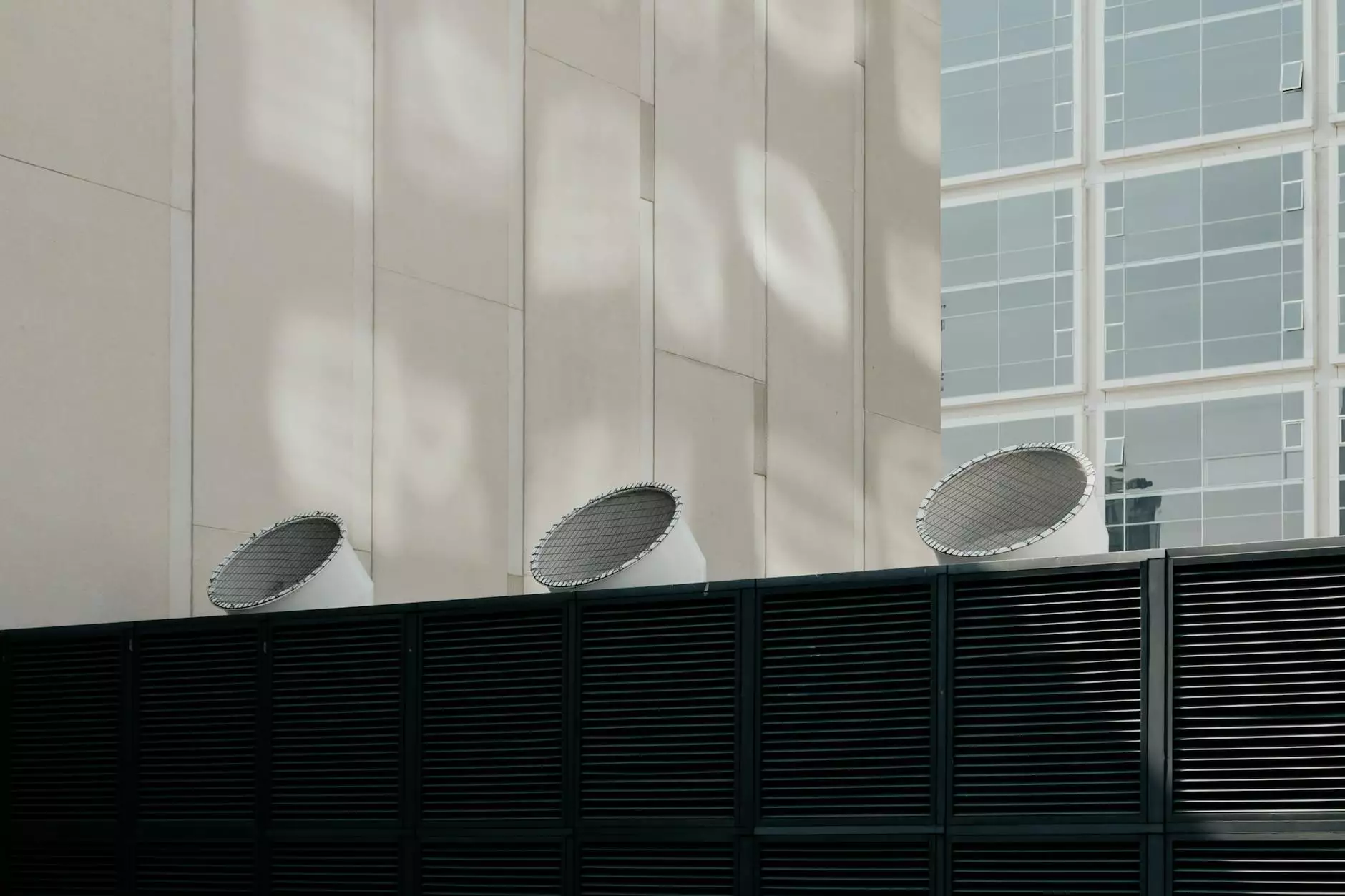The Ultimate Guide to Walk In Freezer Room

In the realm of refrigeration equipment, the walk in freezer room stands out as a crucial element for businesses that require efficient and reliable cold storage. From restaurants to supermarkets, these specialized spaces are designed to preserve frozen goods at optimal temperatures, ensuring their quality and safety. This comprehensive guide will delve into the myriad aspects of walk in freezer rooms, highlighting their benefits, design considerations, and operational efficiency.
What is a Walk In Freezer Room?
A walk in freezer room is essentially a large refrigerated space that allows personnel to enter and store significant quantities of food or other temperature-sensitive products. Unlike standard freezers, these units are designed for bulk storage and can accommodate a wide variety of items, from meats and dairy products to prepared meals and vegetables.
Benefits of Walk In Freezer Rooms
Implementing a walk in freezer room offers numerous advantages that can enhance a business's efficiency and profitability. Here are some of the primary benefits:
- Enhanced Storage Capacity: Walk in freezer rooms provide substantial storage space, allowing businesses to stock more products without the need for additional freezers.
- Improved Energy Efficiency: These rooms are designed to maintain low temperatures while minimizing energy consumption, which can lead to reduced operating costs.
- Better Inventory Management: With designated shelving and organization systems, walk in freezers simplify inventory tracking and accessibility.
- Increased Product Longevity: Maintaining optimal freezing conditions helps preserve the quality and shelf life of food items.
- Safety Compliance: Proper cold storage is essential for complying with health and safety regulations, reducing the risk of foodborne illnesses.
Key Features of a Walk In Freezer Room
Understanding the essential features of a walk in freezer room can help businesses make informed decisions when investing in refrigeration equipment. Below are the critical components to consider:
1. Structural Design
The structure of a walk-in freezer is typically made of insulated panels that ensure minimal heat transfer. This insulation is crucial for maintaining low internal temperatures while reducing energy costs. Panels are often constructed from materials like polyurethane or polystyrene, with thicknesses ranging from 4 to 8 inches, depending on the application.
2. Temperature Control
Accurate temperature control is vital for a walk in freezer room. Modern units come equipped with sophisticated digital thermostats and monitoring systems. These systems allow users to set and maintain specific temperatures, ensuring the safety and quality of stored products.
3. Airflow Management
Proper airflow is necessary to ensure that cold air circulates evenly throughout the freezer room. Systems like evaporator fans and defrosting mechanisms help achieve consistent temperatures and prevent ice buildup, which can affect storage conditions.
4. Accessibility and Organization
Effective organization within a walk in freezer room maximizes storage efficiency. Mobile racks, shelving units, and clear labeling systems aid in easy navigation and accessibility to products. Ensuring that employees can quickly locate what they need can significantly increase operational efficiency.
Design Considerations for a Walk In Freezer Room
When designing a walk in freezer room, several factors must be considered to ensure optimal functionality and compliance with regulations.
1. Size and Space Requirements
Careful planning of the freezer room's size is essential. Businesses need to consider current and anticipated inventory sizes and the space required for personnel to move safely within the room. A well-designed layout minimizes congestion and maximizes efficiency.
2. Location
Another consideration is the placement of the walk in freezer. Positioning it away from direct sunlight and heat sources will reduce energy costs. Additionally, accessibility for unloading deliveries should be a priority.
3. Regulatory Compliance
Adhering to local health codes and regulations is non-negotiable. Businesses must ensure that their freezer rooms meet safety standards and pass inspections, which may include maintaining specific temperature ranges and proper sanitation protocols.
Installation and Maintenance of Walk In Freezer Rooms
The installation and ongoing maintenance of a walk in freezer room are crucial for its longevity and effectiveness. Here’s what you need to know:
Installation Process
Installing a walk in freezer generally involves the following steps:
- Site Preparation: The area must be cleaned and leveled to support the freezer room structure.
- Panel Installation: Insulated panels are assembled to create the walls, ceiling, and floor of the freezer.
- Refrigeration Unit Setup: The refrigeration system is installed, including the compressor and evaporator units.
- Electrical Connections: All electrical work must be conducted by qualified professionals to ensure safety and compliance.
- Testing: After installation, the freezer should be tested to ensure it operates at the desired temperature and performance standards.
Maintenance Tips
Regular maintenance is necessary to avoid breakdowns and ensure that the freezer operates efficiently. Here are key maintenance tips:
- Regular Inspections: Schedule routine inspections to check for potential issues, such as air leaks or mechanical failures.
- Cleaning: Keep the freezer clean and sanitized to prevent contamination and maintain the quality of stored goods.
- Monitor Temperatures: Constantly track temperature levels with reliable monitoring systems to ensure consistent conditions.
Energy Efficiency and Cost Savings
Investing in a walk in freezer room can lead to significant long-term savings through enhanced energy efficiency. Here are some ways to improve energy efficiency:
1. Energy-Efficient Components
Utilizing energy-efficient refrigeration units and LED lighting can drastically reduce energy consumption. Look for ENERGY STAR-rated equipment for optimal performance.
2. Temperature Optimization
Adjusting the temperature settings to the necessary levels – rather than keeping everything at the coldest possible – can lead to significant energy savings without compromising product quality.
3. Automated Controls
Automated systems for defrosting and temperature regulation can help maintain efficiency by ensuring that units only operate as needed.
The Future of Walk In Freezer Rooms
As technology continues to advance, the future of walk in freezer rooms looks promising. Innovations include:
- Smart Freezer Technology: Integration with IoT devices allows for remote monitoring, predictive maintenance, and enhanced operational efficiency.
- Sustainable Practices: The shift towards eco-friendly refrigerants and energy sources is gaining momentum, leading to more environmentally responsible operations.
- Modular Designs: Flexible, modular designs allow businesses to adapt their freezer rooms to changing needs without extensive renovations.
Conclusion
Investing in a walk in freezer room is not just a choice; it's a necessity for businesses looking to store products efficiently and safely. With numerous benefits such as enhanced storage capacity, energy efficiency, and improved product longevity, these refrigeration solutions stand as crucial elements in the operations of many industries.
Whether you are a restaurant owner, a supermarket manager, or involved in any business where food safety is paramount, understanding the design, installation, and maintenance of walk in freezer rooms will pay dividends in service quality and customer satisfaction. Explore your options on modularcoldrooms.co.uk and take your refrigeration solutions to the next level.



